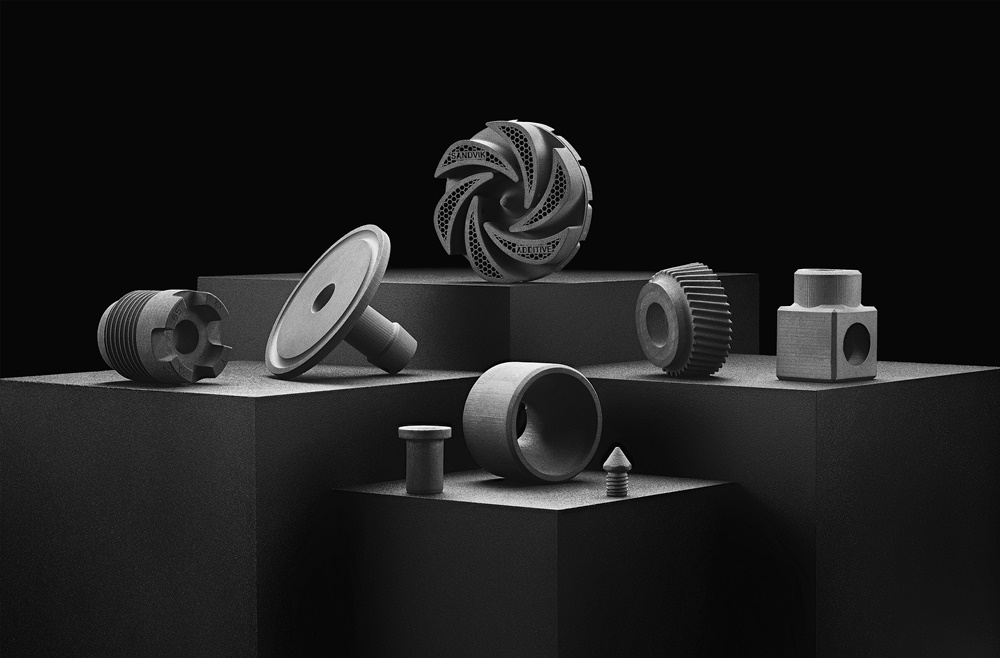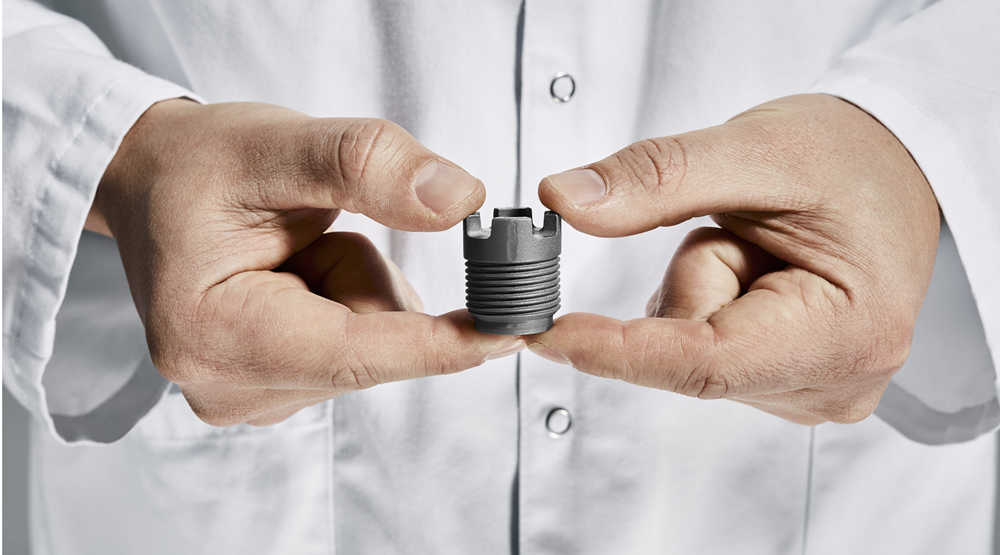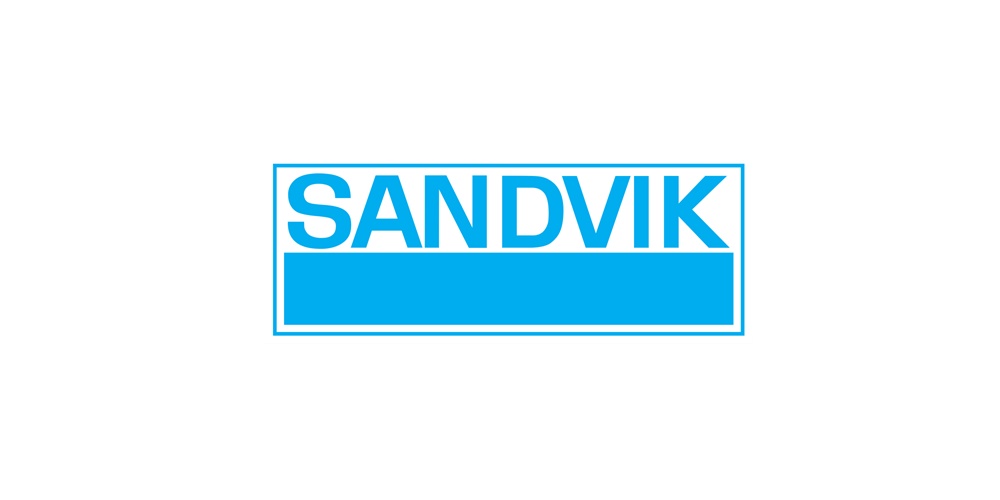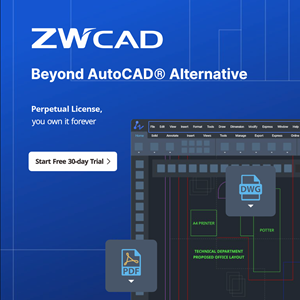SANDVIKEN, Sweden, Apr 18, 2022 – Sandvik continues to expand their additive offering through introducing 3D printed cemented carbide – with superior wear-resistant properties. This is enabled by a unique powder, crafted through a patented process developed by the company’s leading experts along the additive value chain.

With 160 years of leading materials expertise and the widest range of metal powders on the market, Sandvik has been working with cemented carbide since 1932. Today, Sandvik is a world leader in hard materials, providing for instance metal cutting- and mining tools such as turning inserts, end-mills, and drill bits. Now, the materials authority is broadening its offering to also include 3D printed components in cemented carbide.
Cemented carbides have a unique character as a result of their composite structure – a wear-resistant phase bonded together by a ductile binder metal – and are widely used across multiple industries such as metal cutting, agriculture, food, and oil and gas. Due to its inherent hardness, cemented carbides can be challenging to machine, not least in complex geometries. Leveraging their century-long materials expertise, Sandvik can now offer 3D printed cemented carbide on a commercial scale – based on a tailor-made powder attained through a proprietary process – with the design freedom, decreased material waste, and fewer replacements that comes with additive manufacturing technology.

In their “Plan it, Print it, Perfect it” approach to additive manufacturing, Sandvik states printing is just one of the seven steps you have to master in order to succeed with the industrialization of AM – and that obtaining the most optimal material, tailor-made for your AM process and end component, is the first and perhaps most important step.
Anders Ohlsson, Lead Product Manager at Sandvik Additive Manufacturing, comments: “The most critical component in our process is working with powders that have the just-right properties. Above all, high density crucially impacts the quality achievable in terms of material properties and geometry. Sandvik has developed both a powder and a process that are unique. My view is that with commercial powders, you can make things that look cool – but don’t really work. Our powders are optimized to print components that look great, work well – and are fit for use in actual applications, demanding environments, and serial production. It’s also well worth mentioning the ability to 3D print cemented carbide speeds up our time-to-market rather dramatically. Prototyping used to take 6-12 months – and now our lead time to date is a matter of weeks.”
Anders Ohlsson continues: “Cemented carbide is one of the very hardest, if not the hardest material available in 3D printed shape as of today. When implementing additive manufacturing into your business, you basically eliminate all previous design restrictions – enabling you to focus on designing components based on operational needs and requirements, without having to adapt to a specific shape or form. One example is this wire drawing nib from a recent R&D project in our workshop. The closed loop spiral coolant channels enable efficient cooling of the nib, while the wire remains dry. This would have been impossible to achieve without additive manufacturing.”

A key differentiator compared to other hard materials is the fact that these alloys are often brittle, to some extent – while cemented carbide, with its’ matrix structure consisting mainly of cobalt and tungsten carbide, is uniquely tough. Thanks to the extreme durability of the material, the printed components are well suited for most industries looking to optimize production efficiency – including those operating in challenging environments.
Mikael Schuisky, VP and Head of Business Unit Additive Manufacturing at Sandvik, says: “The main enabler behind us continuously building on our additive offering is the fact that at Sandvik, innovation never stops. Thanks to our longstanding experience in materials technology paired with our expertise along the additive value chain, made even stronger by our partnership with the BEAMIT Group, we can innovate at a speed few others can. This makes us uniquely positioned to drive the shift toward the industrialization of 3D printing, and prove sustainable manufacturing isn’t just possible – it’s already happening. 3D printing in cemented carbide is a natural next step for us having perfected these materials for decades, and we are very pleased to offer additively manufactured components that can revolutionize the performance throughout our customers’ businesses.”
About Sandvik Additive Manufacturing
Sandvik Additive Manufacturing has a world-leading position in metal powder with the widest range of AM alloys on the market. The company has also made sizeable investments into a wide range of AM printing technologies since 2013. Adding 160 years of leading expertise in materials technology, more than 75 years in post processing methods like metal cutting, sintering and heat treatment, Sandvik has well established and leading competence across the entire AM-value chain. In 2019, Sandvik acquired a significant stake in BEAMIT, a leading European-based AM service provider, and in 2020 and 2021, the BEAMIT Group acquired 100% of ZARE in Italy and 3T Additive Manufacturing in the UK, bringing together three leading AM service bureaus in Europe – to create one of the largest independent AM service providers in the world, serving the most demanding industries.
Sandvik AB is a high-tech and global engineering group with approximately 44,000 employees and sales of approximately 99 billion SEK in more than 150 countries (2021). The company was founded in Sweden in 1862. For more information, visit https://www.additive.sandvik.






